Lung Sound Auscultation Trainer "Pediatric LSAT"
Product supervision:
Yuki Okamatsu, Director of Pediatrics, Iizuka Hospital, Japan
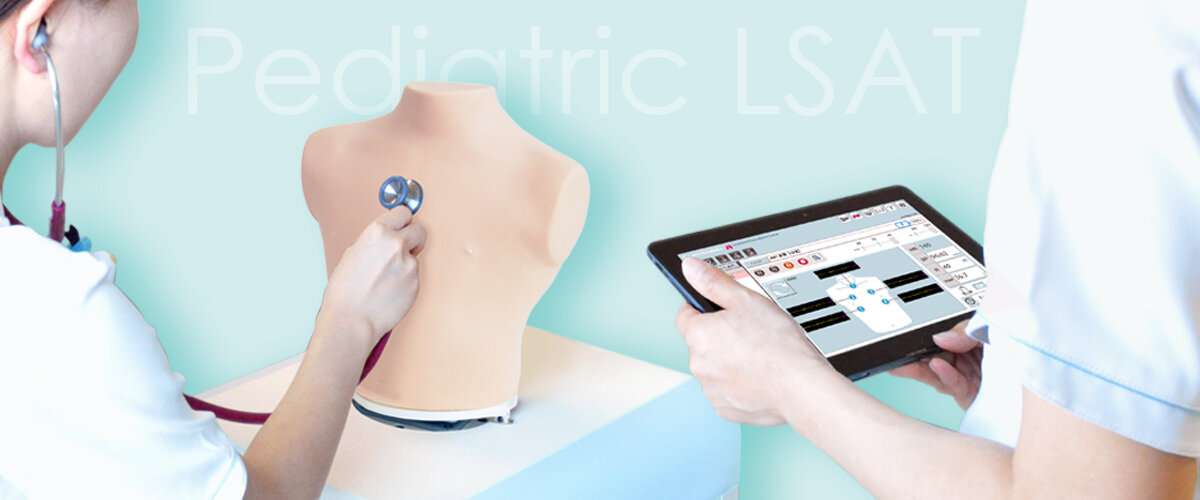
This unique trainer can offer more efficient and effective respiratory auscultation training.
The physical status adjustable by touching control PC.
Students specializing in pediatrics can learn the basics of pediatric respiratory auscultation.
NEW FEATURES
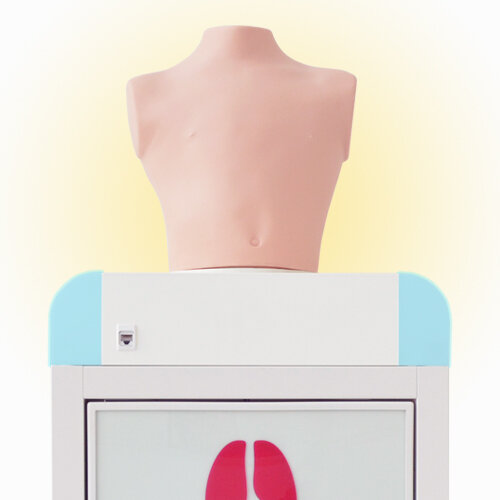
Respiratory rate
Pediatric LSAT simulates the respiratory system 1 to 5 years olds allowing for an adjustable rate of 15 to 50 breaths per minute.
Heart rate
Pediatric LSAT automatically sets the heart rate to the respiratory rate(le: 90 beats/minute per the respiratory rate of 20 breaths per minute. 140 beats/minute per the respiratory rate of 40 breaths/minute. etc)
Differentiation of sound
Reproduces accurate pediatric lung sound. Unlike an adult subject, Pediatric LSAT is designed so sounds are easily recognizable as being either from the upper and lower lung fields.
Model shape
Pediatric LSAT is designed to accurately reflect the chest size of a subject from 1 to 5 years of age.
FEATURES
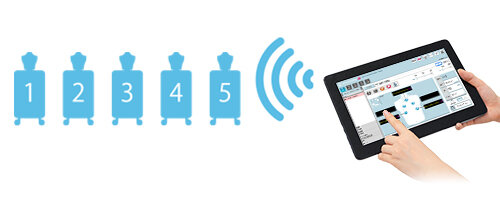
Wireless multi-unit operation
Up to five “Pediatric LSAT” can be controlled by one wireless control PC.
Each simulator can be individually programmed.
Cases can be switched at any time with a simple touch.
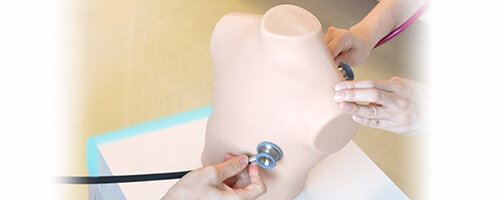
Simultaneous anterior and posterior auscultation
Two or more trainees can work together at the same by real stethoscopes.
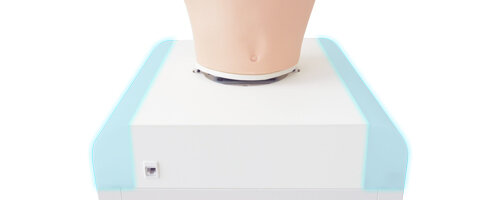
LED light panel to indicate inspiration and expiration
Attention to respiration rate while auscultating during examination
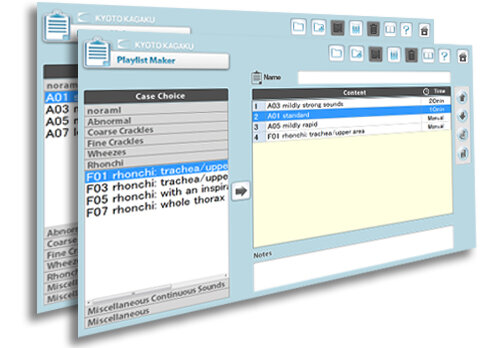
Create a custom playlist
With 20 different cases.
Incorporated "Playlist Maker" facilitates creating and conducting scenario based training sessions which feature change in finding over time.
Playlist Maker facilitates:
- sessions with accompany temporal change in physical findings
- standardizing training contents among different instructors.
- saving time of preparation
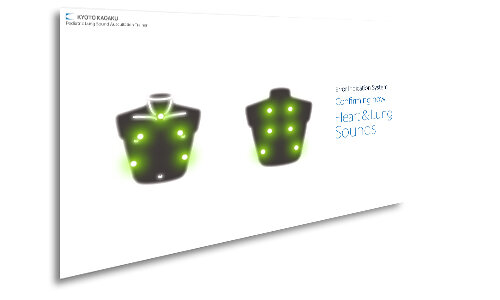
Error Indication System
The error indicator performs check-up of the system to keep Pediatric LSAT in its best condition. Troubles and errors in speakers are warned on screen. History of system conditions is automatically recorded for reference.
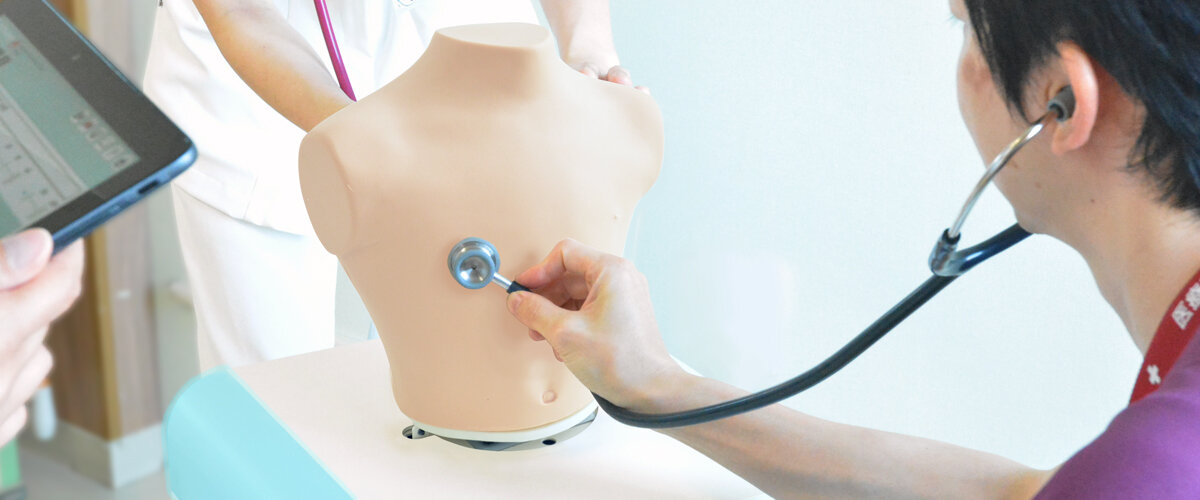
Basic Functions
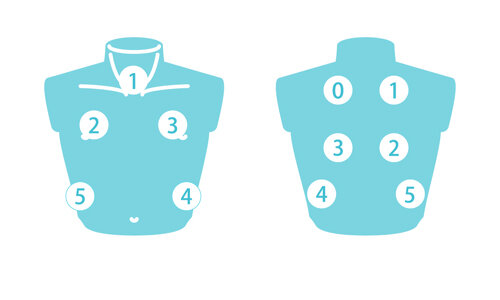 Left: Anterior / Right: Posterior
Left: Anterior / Right: Posterior
Anterior
1.trachea 2. upper right lung field 3. upper left lung field 4. lower left lung field 5. lower right lung field
Posterior
0. upper left lung field 1. upper right lung field 2. middle right lung field 3. middle left lung field 4. lower left lung field 5. lower right lung field
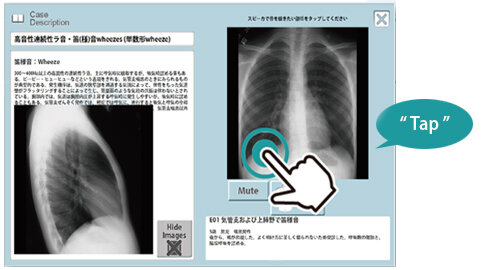
Case Information
Images of plain X-ray, CT and bronchoscopy are included.
Lung sound of each area can be played by tapping the plain X-ray image
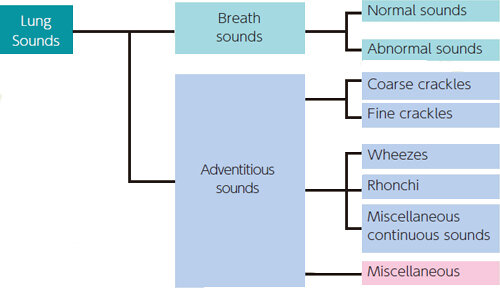
Classification of Lung Sounds
Based on acoustic analysis of recorded lungs sounds, each are classified according the American Thoracic Society standards. With this approach, lung sounds are categorized as continuous (wheezes, rhonchi, or stridor) or discontinuous (crackles). Crackles are further identified as fine or coarse.
CASES
Normal
standard
Abnormal
weak: left lower area / weak: left whole area / weak: right lower area / weak: right whole area
Coarse crackles
right lower area / both lower area / left lower area / both upper area / whole area / right upper area
Fine crackles
both lower area / whole area
Wheezes
trachea and upper area / whole area
Rhonchi
trachea and upper area / whole area
Combined cases
coarse crackles+rhonchi / fine crackles+wheezes
Miscellaneous
stridors
